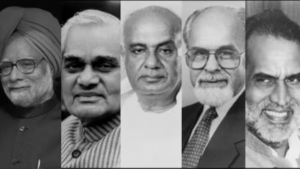The Bharatiya Janata Party (BJP), led by Prime Minister Narendra Modi, faced setbacks in key states during the 2024 Lok Sabha election results, resulting in the loss of its exclusive national majority.
Despite being the largest single party in the Lok Sabha, the BJP’s performance fell short of its achievements in the previous elections. In contrast to securing clear majorities independently in 2014 and 2019, the BJP only managed to secure 240 seats this time, well below the halfway mark of 272 seats. On the other hand, the opposition INDIA alliance, led by the Congress party, surpassed expectations by securing 232 seats.
While Modi’s party still has the capacity to form the next government, it will now rely on the support of a coalition of allies to reach the 272-seat threshold. Together with its allies, collectively known as the National Democratic Alliance (NDA), the BJP secured a total of 292 seats.
Previous Coalition Governments in India Who Came To Power
Throughout India’s political history, there have been instances where coalitions of parties have come to power, resulting in prime ministers from parties that won only a few seats. Here are some notable examples:
Chandra Shekhar (Janata Dal [Samajwadi]): In 1989, the Janata Dal ascended to power with external support from the Congress, leading to Chandra Shekhar becoming the prime minister for a brief period.
H D Deve Gowda (Janata Dal): Following the 1996 Lok Sabha elections, the United Front coalition, with support from the Congress, came to power, and H D Deve Gowda assumed the prime ministership.
I K Gujral (Janata Dal): Gujral succeeded Deve Gowda as the prime minister but resigned within a year, leading to fresh elections.
Atal Bihari Vajpayee (BJP): In 1999, the National Democratic Alliance, led by the BJP, secured a majority in the Lok Sabha, marking the first time a non-Congress coalition had achieved such a feat.
Manmohan Singh (2004 and 2009): In 2004, the Congress-led United Progressive Alliance formed the government with external support from various parties, with Manmohan Singh serving as the prime minister. Singh was re-elected in 2009, becoming the first prime minister since Jawaharlal Nehru to complete a full five-year term after being re-elected.
The 2024 Lok Sabha election results reflect a shifting political landscape in India, with coalition politics playing a significant role in government formation. As the BJP navigates forming a coalition government, the country awaits the next steps in its political journey.














